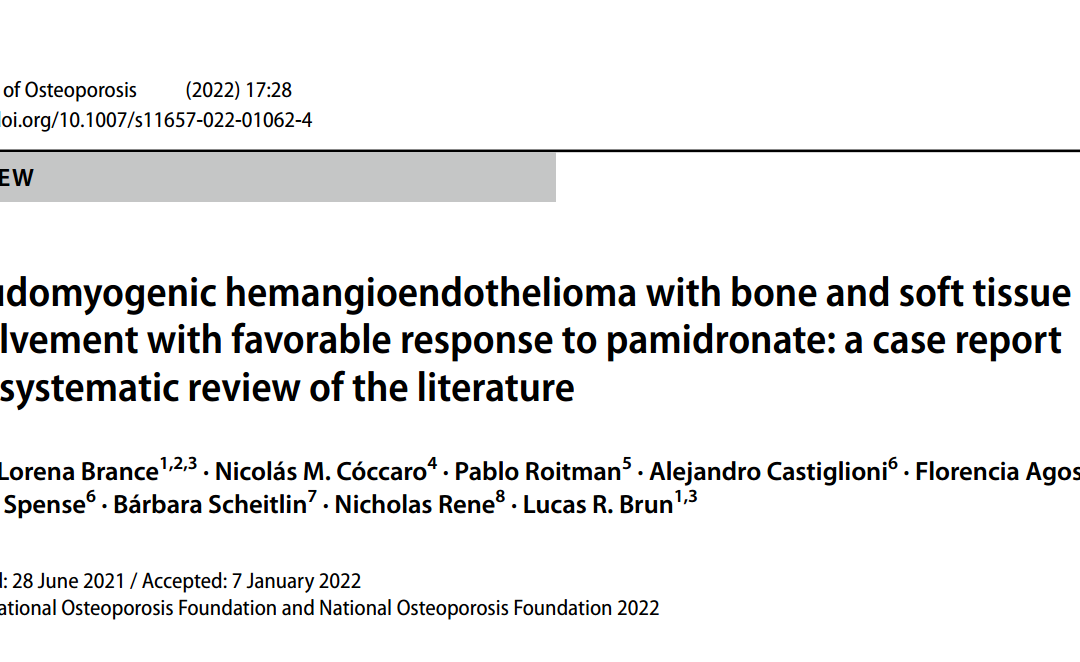Cite: Brance ML, Cóccaro NM, Roitman P, Castiglioni A, Agostinis F, Spense M, Scheitlin B, Rene N, Brun LR. Pseudomyogenic hemangioendothelioma with bone and soft tissue involvement with favorable response to pamidronate: a case report and systematic review of the literature. Arch Osteoporos. 2022; 17(1):28. doi: 10.1007/s11657-022-01062-4.
Abstract
Pseudomyogenic hemangioendothelioma (PMH) can be a challenge for diagnosis and might be confused with other tumors, such as epithelioid sarcoma. Here we present a case and a systematic review of the literature to identify and discuss PMH treatment in primary bone involvement. A 25-year-old woman was referred for bone pain (10/10) in the left lower limb. Magnetic resonance imaging (MRI) showed multiple bone lesions (left femur, tibia, patella, ankle, and foot) with well-defined borders without signs of local aggressiveness. Positron Emission Tomography-Computed Tomography (PET-CT) showed multiple metabolic musculoskeletal lesions in the left lower limb. A CT scan-guided biopsy was performed. Histological and immunohistochemical findings confirmed the diagnosis of PMH. After treatment with intravenous pamidronate (90 mg/monthly), the patient had clinical improvement, mild pain 2/10 without the use of non-steroidal anti-inflammatory drugs or opiates. Follow-up was assessed by MRI and PET-CT. PET-CT showed metabolic resolution of most of the bone and muscular lesions and a significant improvement of the femoral lesion. MRI showed that the lesions in the left femur, tibia, and foot had a marked decrease in size without intravenous post-contrast enhancement and smaller lesions had disappeared. After a 3-year follow-up, PET-CT showed no metabolically active images. Literature review identified 31 records including 58 clinical cases of PMH with primary bone involvement and treatment description for qualitative analysis. Most lesions (69%) were treated by local excision or curettage. In addition, amputations were performed in a significant percentage of cases (20.7%). In the last years, mTOR inhibitors (n = 7) and anti-resorptive treatments (n = 4) were considered as alternative treatment options, especially in multifocal lesions.

